

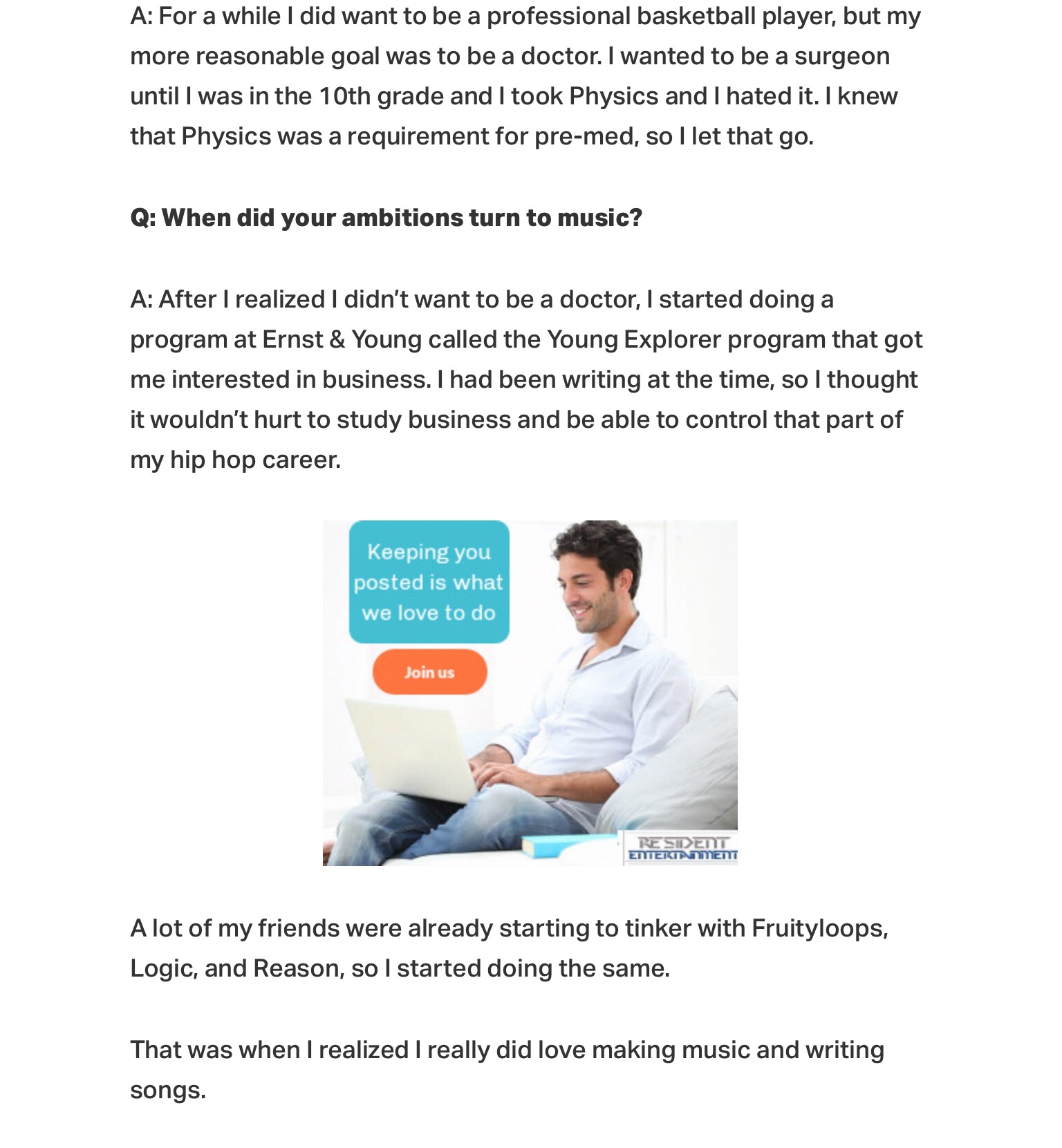
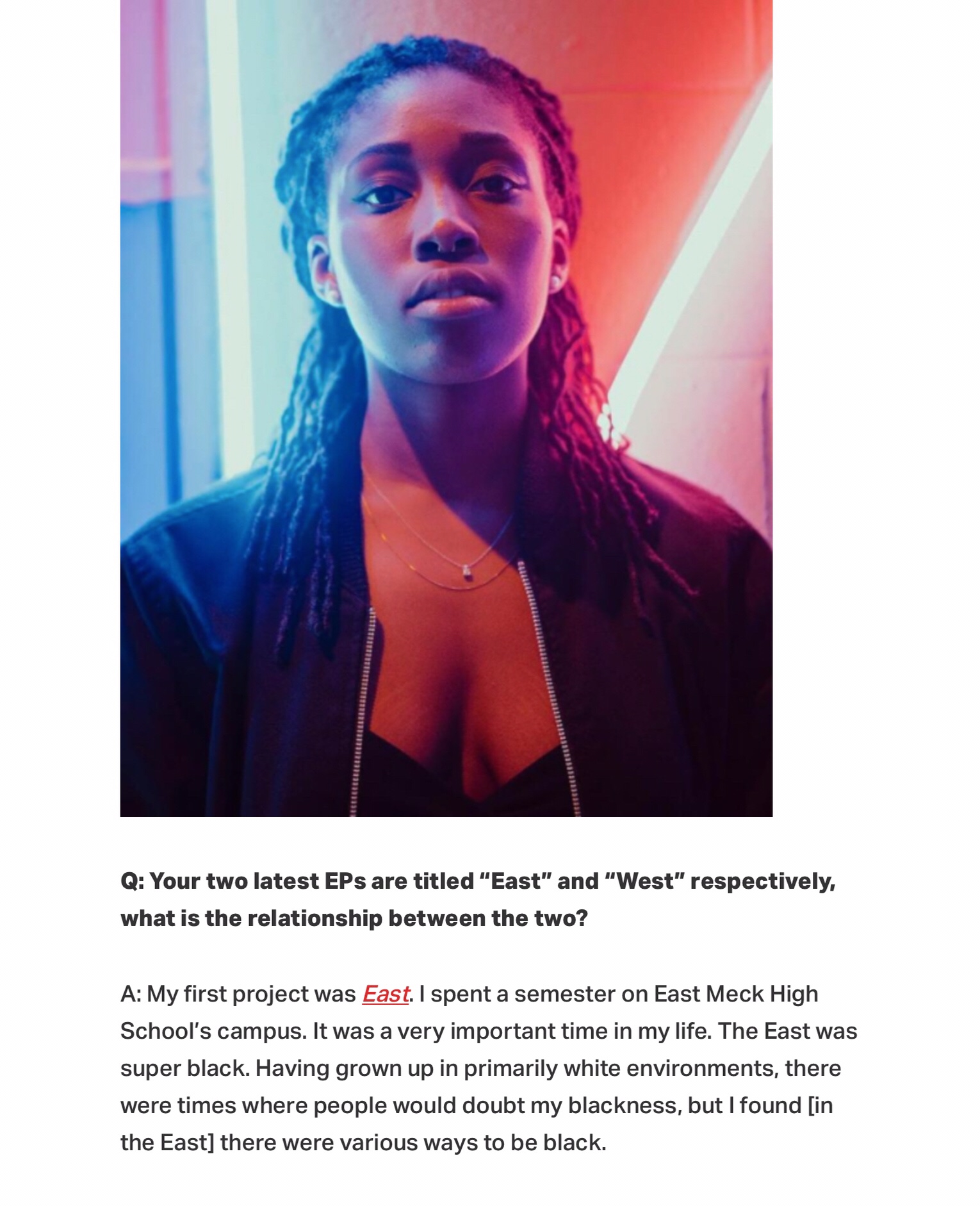
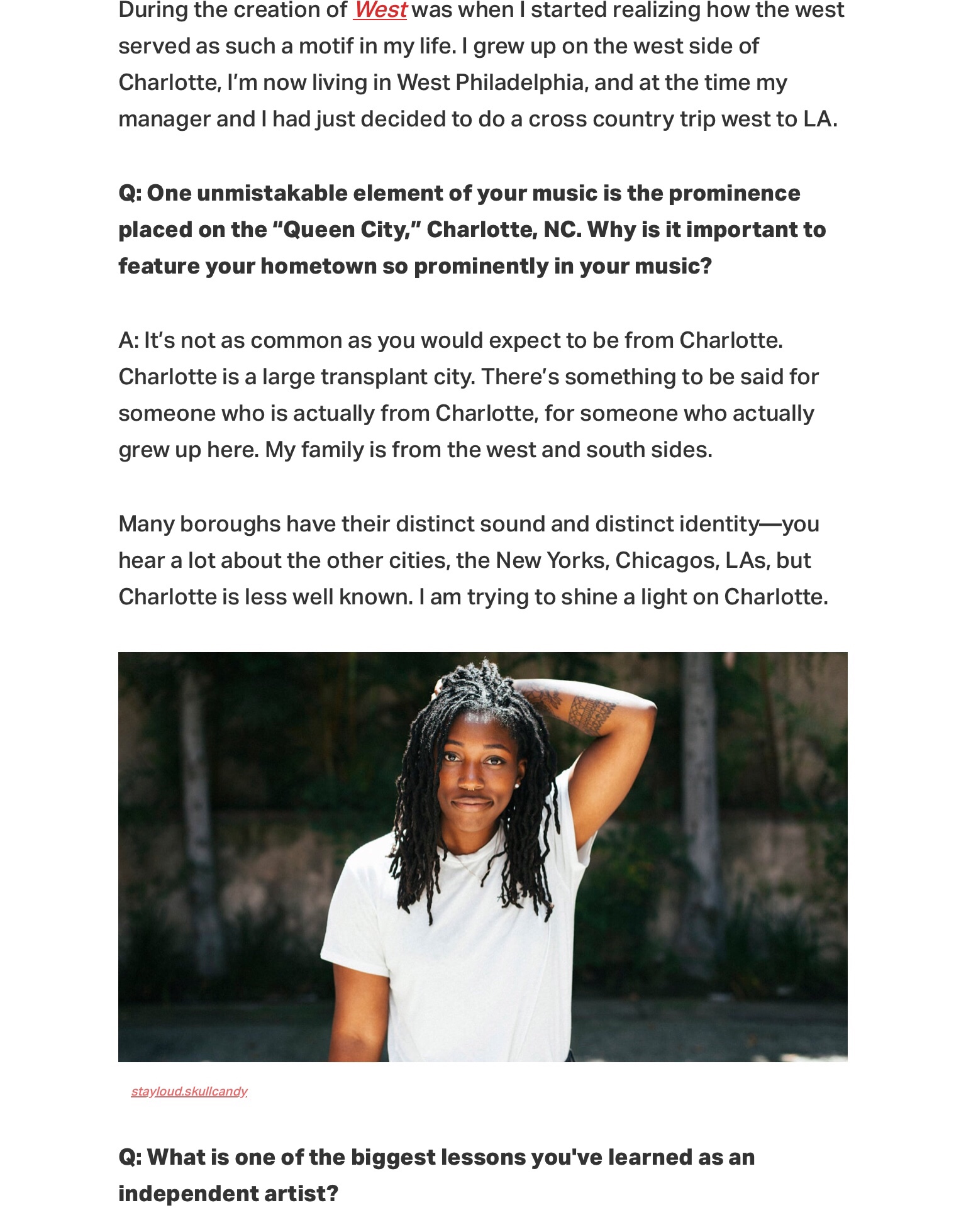

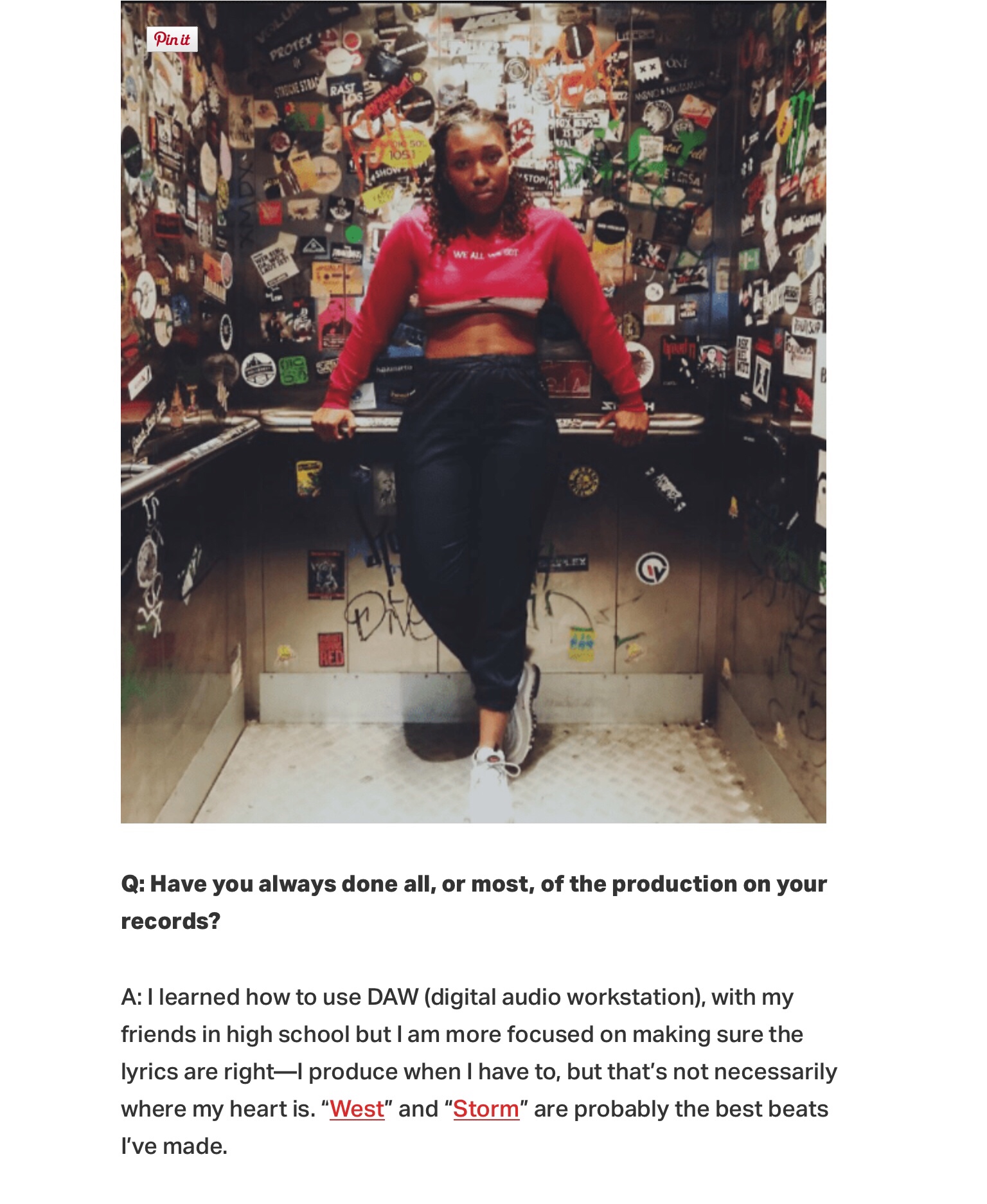
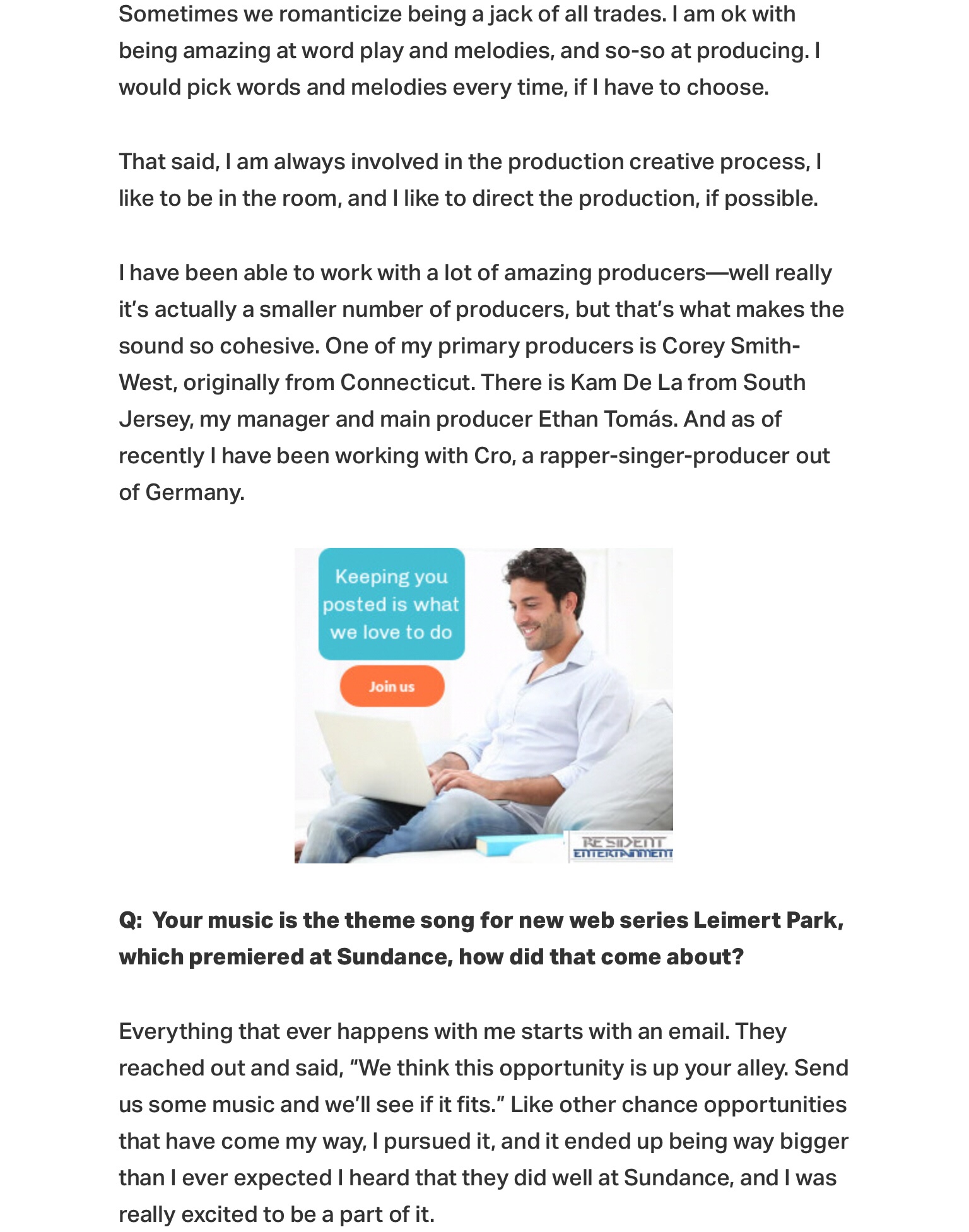
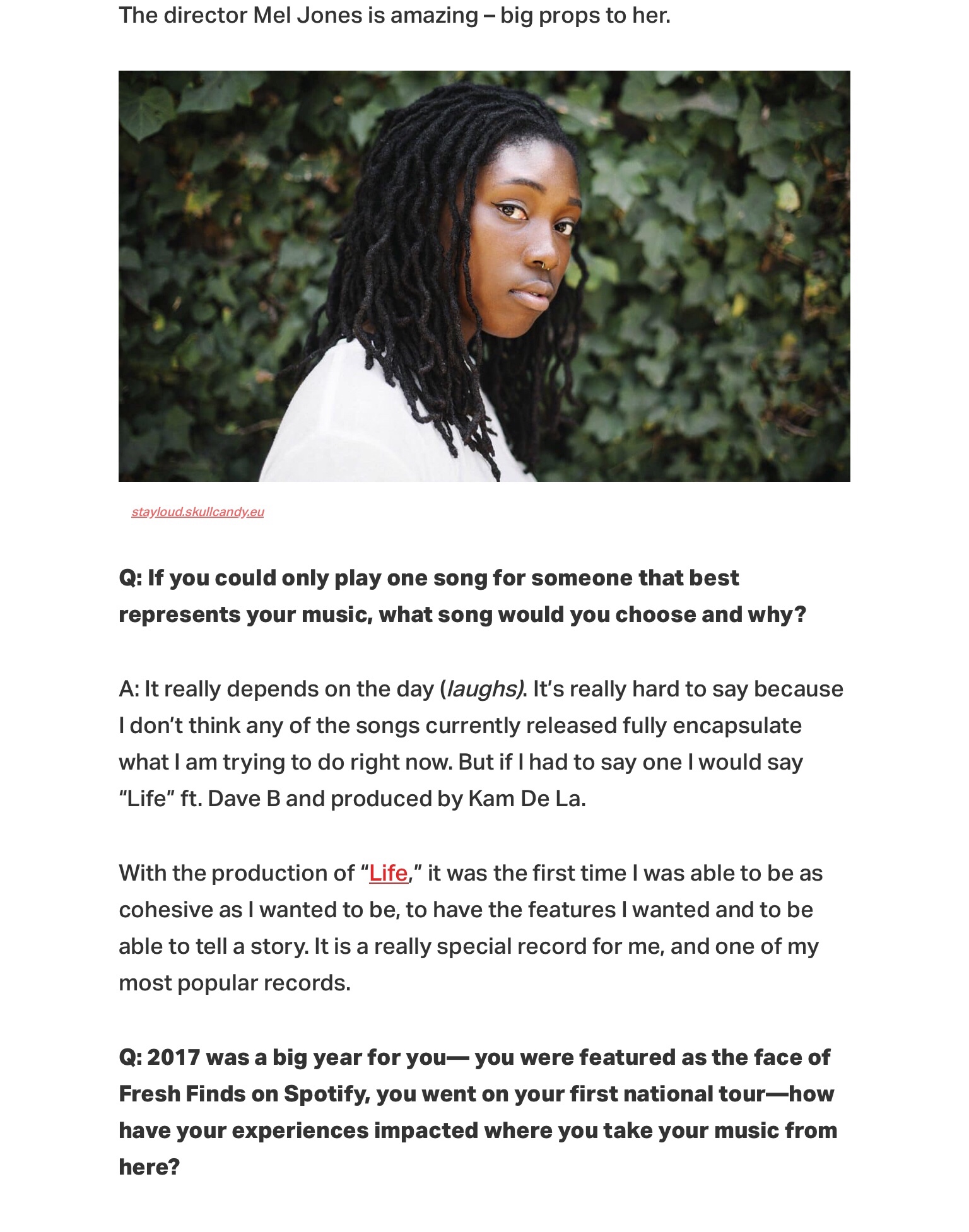
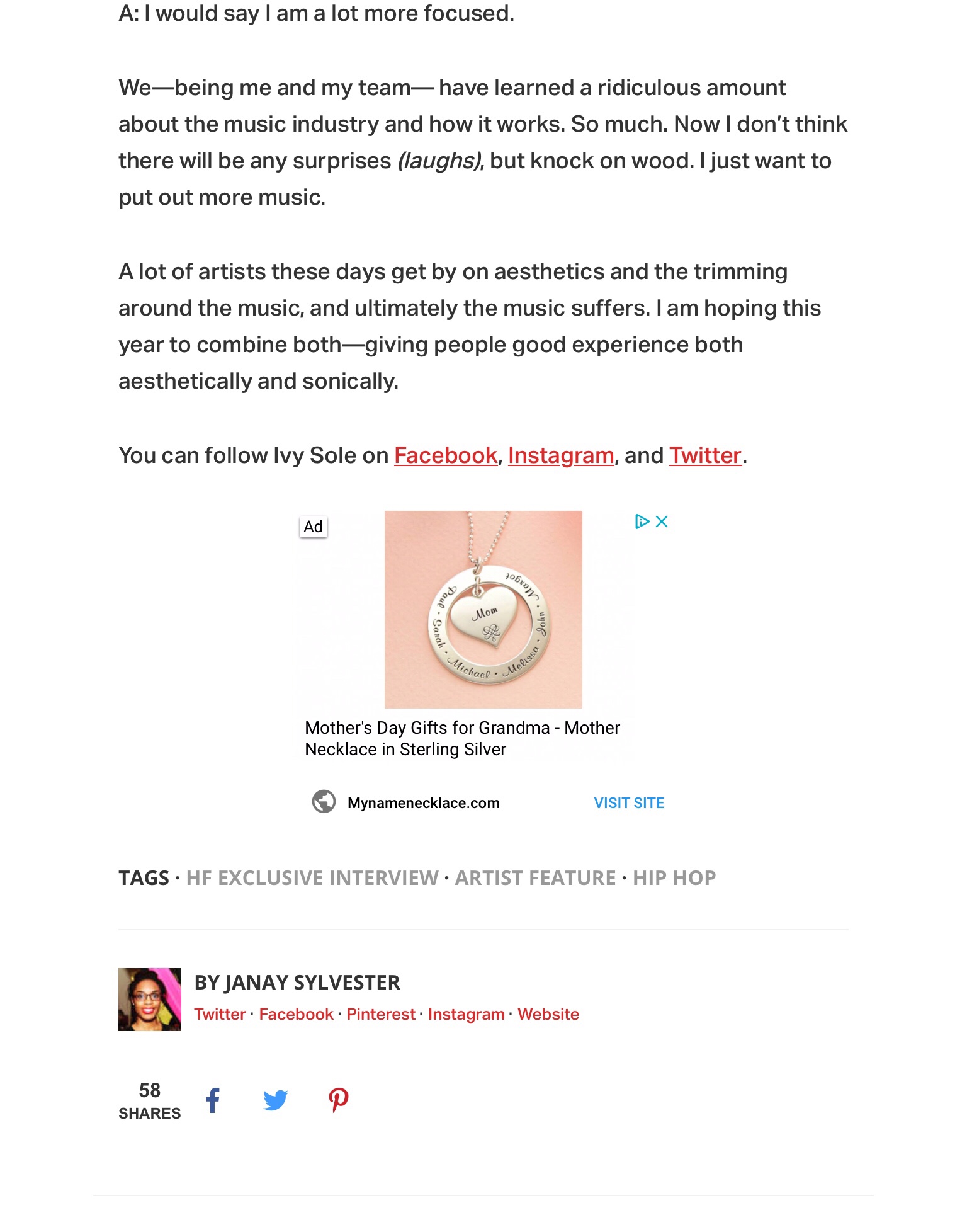
Read the article at hypefreshmag.com.
Music. Thoughts. Inspiration.
I am excited to announce that I will be contributing at hypefreshmag.com! I kicked things of with my first artist interview, Richmond native Chris Scholar. Read the article below, or at hypefreshmag.com.






Read the article at hypefreshmag.com.

My Beloved World by Supreme Court Justice Sonia Sotomayor is a memoir that captures her experiences as a child through her appointment as a U.S. District Court judge.
Who would think a black girl from the Connecticut suburbs would have so much in common with a Puerto Rican girl from the Bronx?
From her upbringing in the neighborhood where I spent many days at my grandfather’s house, to her eye-opening journey into the world of the elite — there was so much I connected to in her story. Though there were over 30 years between our college experiences, it was comforting to know she shared many of the insecurities I dealt with as a minority and a women trying to find my path. Her honest admissions of doubt and good fortune, even after having achieved so many accolades in her life, provide great hope that with a strong support system and hard work, anything is possible.
It is by no means a page-turner (at times painstakingly layered), but it is worth your patience to fully understand how remarkable her story is. If the above doesn’t convince you to read the book, check out some of my favorite excerpts below. (If that still doesn’t convince you, at least watch her interview from Oprah’s Next Chapter.)
On inspiration:
“When a young person, even a gifted one, grows up without proximate living examples of what she may aspire to become—whether lawyer, scientist, artist, or leader in any realm—her goal remains abstract. Such models as appear in books or on the news, however inspiring or revered, are ultimately too remote to be real, let alone influential. But a role model in the flesh provides more than an inspiration; his or her very existence is confirmation of possibilities one may have every reason to doubt saying, ‘Yes, someone like me can do this.’” (178)
On facing new challenges:
“The first year that I face the challenges of any new environment has always been a time of fevered insecurity, a reflexive terror that I’ll fall flat on my face. In this self-imposed probationary period, I work with compulsive intensity and single-mindedness until I gradually feel more confident… I have gone through this same kind of transition since becoming a judge, first on the federal district court, then on the appeals court, and finally on the Supreme Court.” (144)
On affirmative action critics:
“There were vultures circling, ready to dive when we stumbled. The pressure to succeed was relentless, even if self-imposed out of fear and insecurity. For we all felt that if we did fail, we would be proving the critics right, and the doors that had opened just a crack to let us in would be slammed shut again.” (145)
On college diversity:
“The dynamism of any diverse community depends not only on the diversity itself but on promoting a sense of belonging among those who formerly would have been considered and felt themselves outsiders. The greater purpose of these groups had not been self-exile or special pleading. It has been to foster a connection between the old Princeton and the new, a mutual acceptance without which the body as a whole could not thrive or evolve.” (163)
On self-segregation:
“I would warn any minority student today against the temptations of self-segregation: take support and comfort from your own group as you can, but don’t hide within it.” (149)
On minority support:
“The typical undergraduate had been guided to Princeton by relatives, by prep school guidance counselors, or else by teachers savvy about the system. Minority kids, however, had no one but their few predecessors: the first to scale the ivy-covered wall against the odds, just one step ahead ourselves, we would hold the ladder steady for the next kid with more talent than opportunity. The blacks, Latinos, and Asians at Princeton went back to their respective high schools, met with guidance counselors, and recruited promising students they knew personally. Then, every time a minority application landed in the pile of potential admissions, they’d reach out to make the applicant feel welcome or at lease a little less intimidated.” (146)
On her U.S. District Court judge interview preparation:
“…although wisdom is built on life experiences, the mere accumulation of years guarantees nothing.” (288)
Also see: Of The People: Sonia Sotomayor’s Amazing Rise | NPR Book Review
My friend posted “21 Secrets for Your 20s” on my wall this week, and she couldn’t have had better timing. It is so easy to feel inundated with personal problems (especially for those of us who have a “dramatic flair”) when in all actuality the problems you think may be unique to you are actually shared by most of the people your age.
The possibility for greatness and embarrassment both exist in the same space. If you’re not willing to be embarrassed, you’re probably not willing to be great.
This is the quote that stuck with me the most from the article. For New Year’s I decided I was going to try something different. If you know me, then you know I am usually pretty conservative in what I wear. This year I opted for pants and a bowtie instead of my standard little black dress.
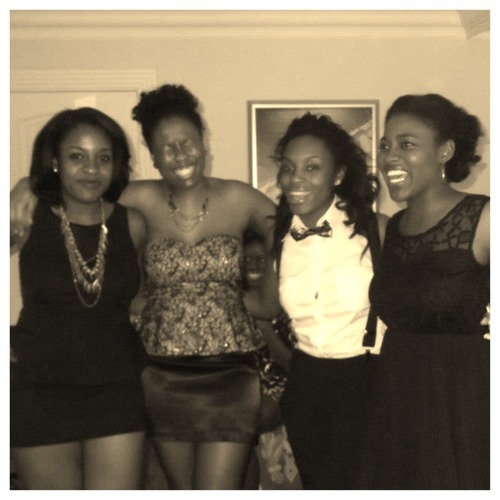
Obviously it wasn’t anything crazy, but it was definitely out of my comfort zone and my outfit produced some positive and negative, yet comical reactions from complete strangers.
This brings me to my New Year’s Resolution. Stop playing it safe. Take risks. Start small, with an outfit, and work my way to the big stuff. You can literally consume all your time worry about other people’s opinions, but lest we forget:
You’re nobody until you’re talked about. – Gossip Girl
Read the full article here.
This fall, Penn students had the opportunity to sign up for an urban studies course that allowed students to work together in teams to collectively decide how to give away $100,000 to local charities in Philadelphia.
Each team was responsible for creating a mission statements, soliciting grant proposals from local nonprofits, making site visits and interviewing administrators. The $100,000 grant was provided by the Once Upon A Time foundation.
After reading the article, I was so disappointed that I was unable to take the course as an undergrad because it would have been great exposure to the nonprofit world that I have increasingly gained interest in following graduation. Not that being a PPE major is an excuse, but I did not even know the course existed!
As I currently work on my first (of hopefully many) nonprofit projects, and as a future philanthropist (speaking it into existence), this course sounds so exciting. Just thought I would share, in case any current/future Penn students happen to stumble across my blog — check out the article and the course when you begin to plan out your schedule for the semester — it truly sounds like a worthwhile semester-long experience!
Penn Philanthropy Class Gives Out $100K To Local Charities
University of Pennsylvania student Sharree Walls didn’t realize when she signed up for a course on philanthropy that she’d actually become a philanthropist at the end of the semester.
Then her professors announced that the class would be doling out $100,000 to local nonprofits. Walls said she was thrilled, excited – and “definitely a little nervous.”
“Obviously, it’s a huge responsibility,” said Walls, a 21-year-old urban studies major from Lombard, Ill.
The funds came from the Once Upon A Time foundation based in Fort Worth, Texas. Penn is among 13 U.S. colleges to receive a grant from the private philanthropy, which has quickly expanded the program since a successful pilot at Texas Christian University in 2010.
“Our goal is to expose students to the importance of giving back, and giving back in a thoughtful manner,” said foundation President Sam Lett.
But students must do a lot of learning, and legwork, before the checks are written.
The class was a perfect fit for Lett’s foundation, which offered Penn its first grant last year. Bauer said the money hasn’t changed how the course is taught, but “it makes all the information and ideas we share during the semester come alive.”
At Penn, an Ivy League school in Philadelphia, Doug Bauer and Greg Goldman have co-taught an urban studies course on philanthropy and nonprofits for more than a decade. Bauer is executive director at The Clark Foundation, a private philanthropy in New York; Goldman is vice president of development at the nonprofit Philadelphia Zoo.
This year’s class split up and created four “foundations” that would award $25,000 each. They had to devise mission statements, solicit grant proposals from local nonprofits, make site visits and interview administrators.
The first several weeks include lectures, discussions, readings and papers – all designed to teach students “how complex it is to nurture an urban community, and how critical the role of nonprofits and philanthropy are,” Bauer said.
Read the complete article here.